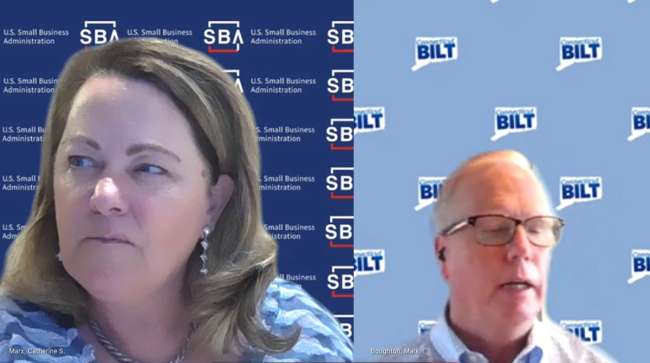Staff Reporter
Government Groups Seek Assistance in Filling Infrastructure Jobs

[Stay on top of transportation news: Get TTNews in your inbox.]
State and local government groups are calling on Congress to create a national workforce strategy for transportation jobs as Connecticut grapples with a need for 450 engineers to spend federal infrastructure funds.
The National League of Cities, United States Conference of Mayors, National Conference of State Legislatures, International City/County Management Association and National Association of Counties issued a May 20 statement calling for Congress to help make it easier for public and private employers to find workers for federally funded infrastructure projects.
“With the passage of the Infrastructure Investment and Jobs Act, there is a pressing need to fill positions within the sectors that will build and maintain our nation’s roads, bridges, water systems and broadband networks. But, hiring for infrastructure jobs is a significant challenge — the median infrastructure job takes 20% more time to fill than a noninfrastructure job,” the group noted.
They asked Congress to invest in national skills training systems and programs to meet employer demand. They also requested Congress increase legal immigration by raising employment-based visa program caps to expand the number of qualified people for hard-to-fill jobs such as truck drivers, heavy-equipment operators, agricultural workers and engineers.
“Increasing the pool of qualified candidates to fill critical positions is essential to strengthening our economy in years ahead,” the statement noted. “State and local governments are committed to engaging with our federal partners toward our common goal of adopting effective strategies to meet our nation’s workforce needs.”
Connecticut’s infrastructure czar revealed the state already is spending IIJA funds on construction projects but “our challenge is we need help. DOT alone needs about 350 new employees to help us deploy this money,” said Mark Boughton, who also is commissioner of the state Department of Revenue Services.
Boughton discussed the state’s difficulties filling infrastructure jobs during a May 17 webinar “IIJA Funding Coming to CT,” sponsored by the Connecticut division office of the U.S. Small Business Administration. The state SBA’s district director, Catherine Marx, moderated.

Host Michael Freeze discusses insurance coverage and costs with Jane Jazrawy of Carriers Edge and David Berno of Hub International. Tune in above or by going to RoadSigns.TTNews.com.
Boughton was appointed by Gov. Ned Lamont in December to serve as senior adviser for infrastructure and works directly with the heads of several state offices including the departments of transportation, energy and environmental protection, policy and management, economic and community development, and administrative services.
“We only produce about 200 engineers in general [annually] in the state in all of our institutions, so we need 450 right off the bat. We have our work cut out for us,” he said, adding that civil engineers are in great demand.
He is working to speed up the state hiring process from three months to three weeks.
“People can’t wait. What’s happening is, we are going to lose them to the private sector or other states that are also trying to spend all this money,” Boughton said. “We’re out there hiring like crazy for us as well as leveraging all our private vendors and outside engineering firms and organizations.”
The state Office of Workforce Strategy is partnering with building and trade organizations to create pre-apprenticeship programs for trade jobs for carpenters, plumbers, metal workers, electricians, etc.
Want more news? Listen to today's daily briefing above or go here for more info
Of the $1.2 trillion in IIJA funds, Connecticut will receive $6 billion, about half of which will go toward highways, Boughton said. It is using infrastructure dollars to accelerate future projects targeted from 2025 to 2027 that were to be paid for with bond issuances but are now fast-tracked with infrastructure finds. Boughton said the state already has identified how it will spend half of its IIJA allocations.
“We are ready to go for them. We just didn’t have the money. Now we’ve got the money, and we’re pulling the trigger,” he said. “Any DOT construction project that you see has already been expanded and enhanced by the infrastructure money, and we have shovels in the ground right now.”
Another hindrance to Connecticut is projects costing up to 30% more than two years ago due to inflation and supply chain issues.
“We’re just going to have to work with that and work our way through it, unfortunately,” Boughton said.
Tanisha Baptiste, state SBA economic development specialist, discussed the importance of small businesses having access to government contracts and subcontracts. She noted that SBA adjusted some of its size mandates so more companies can qualify as small businesses and increase their access to IIJA funds.




